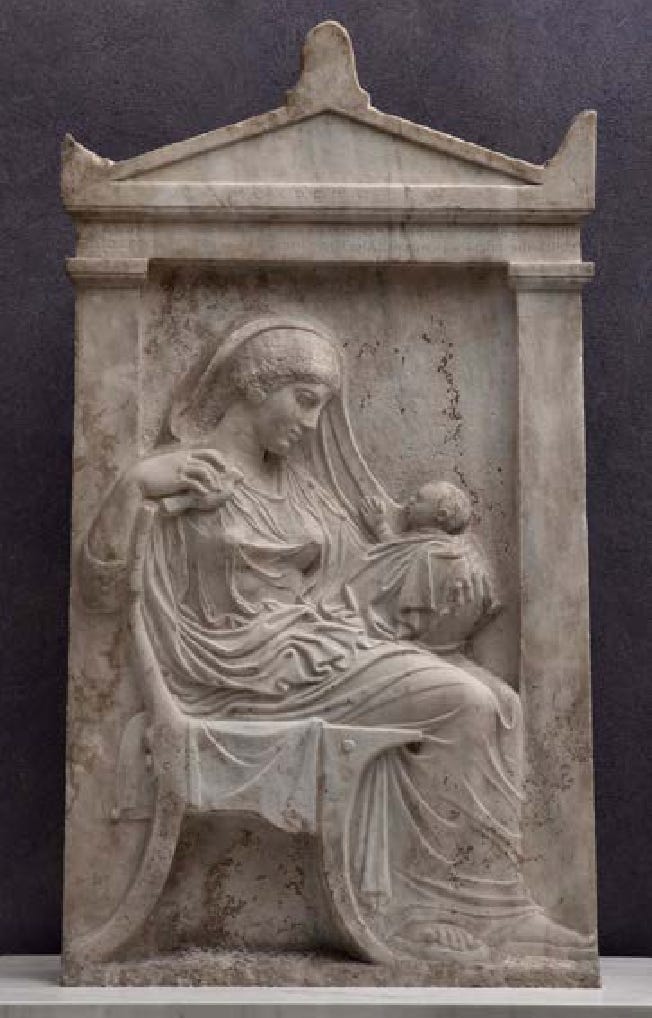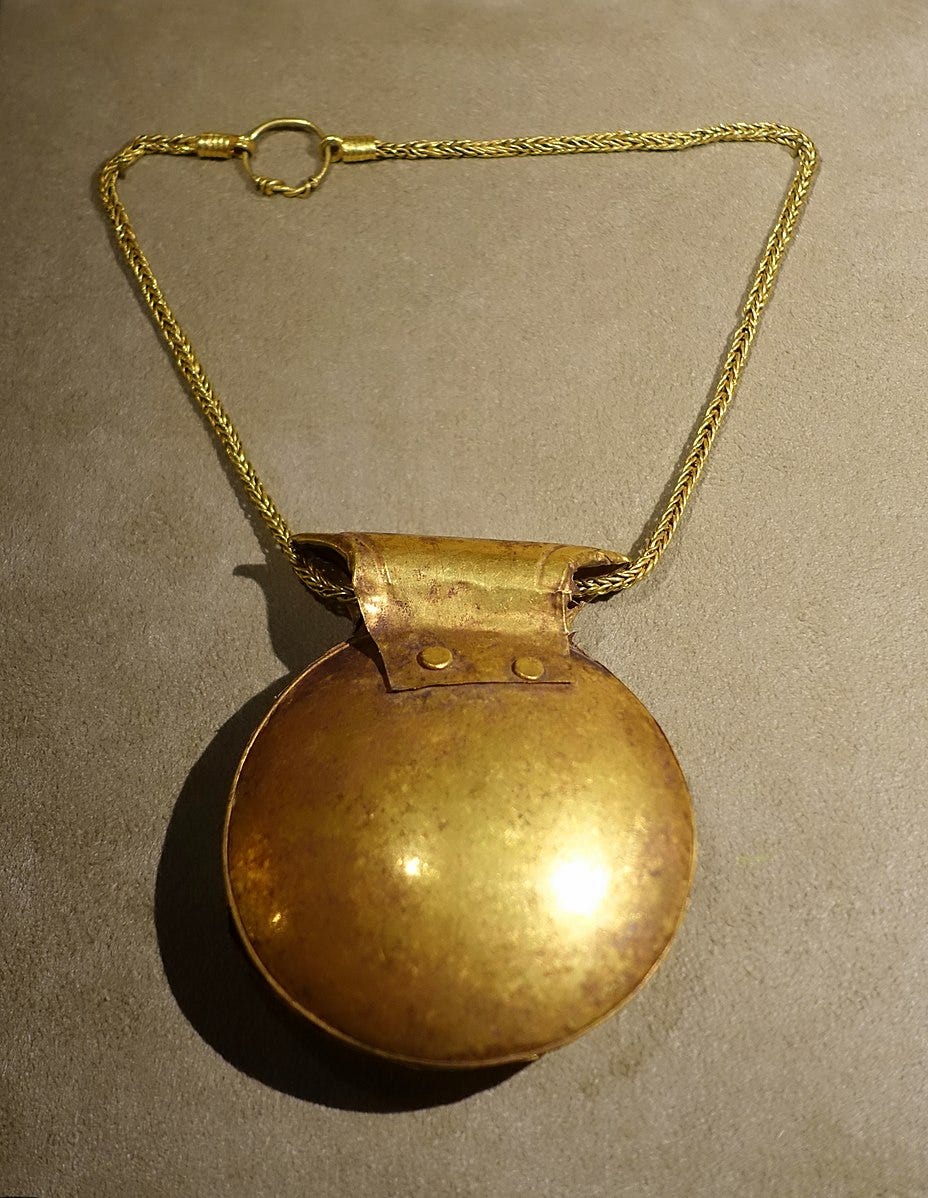Whenever I interact with children or just think of them, my soul illuminates and I immediately smile. Children are sweet, spontaneous, joyful, funny-crazy, loving and more.
My museum art tours with families have led me to explore children’s lives today and in Antiquity with a focus on the city-states of Athens and Sparta in Greece; and Rome from about the 6th century BCE to the 4th century CE.
First, how do we mark the beginning and the end of childhood? Contemporary perception is that childhood is the period between infancy and adolescence (until the age of 12 or 13). In most countries, when a person reaches 18 years, that person has reached the age of majority and is no longer considered an adolescent or minor.
In ancient Greece and Rome, the onset of adulthood could be 14 to 18 for boys and 12 to 15 for girls. Girls were married in their early teens and their life’s purpose was to bear children.
We know that the Greeks treasured children as a means of preserving the family. They viewed childless individuals as useless to society and established a system providing for orphans’ well-being.

Our knowledge of children in Antiquity comes to us via transcriptions of philosophers’ thoughts, pottery and sculpture, especially that of tombs and gravestones. One of these is the Grave Stele of Ampharete - an inscribed monument memorializing the death of Ampharete and her grandchild. They both died in the 5th century BCE. The tombstone features a seated woman (Ampharete) and an infant. The figures look at each other and the baby tenderly reaches out to her grandmother. Written in ancient Greek, the inscription states:
“I hold this my daughter’s dear child,
whom I held on my lap, when we were alive
and looked at the rays of the sun with our eyes,
and now being dead, I hold it dead.”
When babies were born in Greece and Rome, the first few days were a critical period. Infant mortality rates were high with 25 percent of children dying before the age of 10 and with a life expectancy of 25 to 30 years.
At birth, the infant was examined to see if he or she was well-built and strong. In case of sickness or deformity, the baby was left exposed (abandoned) outdoors to die of starvation. In Rome, female infants were exposed more often than infant boys because girls were a financial burden. They couldn’t work and needed dowries (one daughter per family was preferable).
Sometimes, slave traders or people who were childless picked up the infant. Roman infants had amulets placed on their bodies so that they could be recognized later in life and possibly be reunited with their families. By our human rights standards and our compassion for fellow human beings today, the practice of abandoning babies is unimaginable and unacceptable.

This marble plaque depicts a Roman parturition or birthing scene. Positive birthing images such as this one eased the fears of expectant mothers. We see three midwives assisting the birth. Here, the birthing mother reclines on a couch that is covered in drapery or sheets. Compared to our times, men were not present at births unless a physician was needed for an elite mother.
The birth of a child was a joyous occasion and proud parents practiced gender specific birth rites. E.g., in 6th century BCE Athens, the parents of a baby girl might place a tuft of wool (symbolizing spinning – a hallmark of her future duties in a household) on the door of the oikos (Greek for home). Since a boy might become a warrior or statesman, his birth would be marked by an olive wreath on the door. This marked a future triumph or victorious prize at the Olympics or other games.

The above water jar from Greece presents us with an ideal family: a young mother, a dynamic baby boy being handed to a nursemaid, and a youthful husband. At the scene’s left side, a loom symbolizes the responsibilities and work of the mistress of the house. The wreath that announces the baby boy is suspended above the mother’s head.

In Rome, adults’ devotion to family was part of the Roman value system. Happy parents sometimes announced the child’s birth by painting a message on a home’s exterior wall. The following birth announcements were found on walls of a domus (Latin for home)in Pompeii, the city that was buried by the eruption of Mount Vesuvius in 79 CE:
“Announcing the birth of Cornelius Sabinus”
and
“Our daughter was born early in the evening on Saturday, August 2.”
Below, is a monument that intertwines life and death. We see a detail of life scenes from the sarcophagus of M. Cornelius Statius, a Roman boy. At left, our focus is on the boy as an infant. The mother breastfeeds little Cornelius while his father observes the tender scene. At right, the paterfamilias or father proudly holds his son up high in a ceremony called sublatus. In this ritual, the father assumed responsibility for the child. At right, we see the boy now stands before his tutor or father. Sadly, Cornelius died at age eight.

Commissioned by the boy’s parents, this expensive sarcophagus bears a Latin inscription at the bottom edge which states:
“To Marcus Cornelius Statius son of Marcus, from the Palatine tribe … we make (this monument)”.
In our times, the death of an infant is rare and unexpected. Did parents grieve as we do today? Some scholars have implied that Roman parents remained detached so as to not feel the loss of their children. Here, the inscription on Cornelius’s sarcophagus clearly reflects how much his parents loved him.
Parents named their young infants between the seventh and tenth day of life. In Athens, Greece, the amphidromia festival celebrated the introduction of the newborn into the family and children of poorer families received their names. In Rome, children were officially named at a ceremony called nominalia. These rituals survive in contemporary naming ceremonies – religious and secular.



Children wore protective amulets. In the Crawling baby red figure chous from Greece, a cute baby crawls to the left. He wears a string of amulets with pendants or beads across his chest. Amulets warded off baskania (Greek for evil eye). Girls and women wore a crescent moon-shaped pendant which sought protection from the Greek moon goddess Selene, aka Luna for the Romans. At right, the image of an Azabache bracelet on a baby’s wrist currently serves the same purpose.
Roman boys (and sometimes girls) were given a disc-shaped locket or bulla which contained a protective charm. Children wore these charms until adulthood. Since they could have been a gold pendant, or a simple cloth pouch, a bulla extended to all members of society.
Stay tuned for Part 2 where we will explore toys and the transition from childhood to adulthood.



